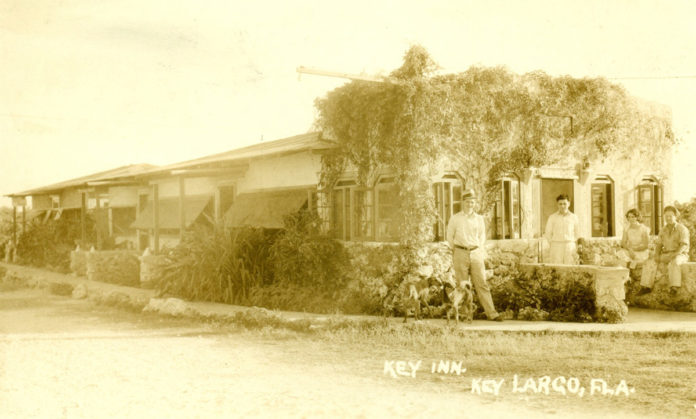Thomas Edison is best remembered for his ground-breaking work with electricity and the phonograph. He is not so well remembered as an early Florida snowbird, which he was.
Edison first ventured down from New Jersey and into Monroe County in 1885, when he purchased more than 13 acres along the banks of the Caloosahatchee River near the small community of Fort Myers.
Two things happened the following year. First, Edison’s home on the banks of the river finished construction. Second, on Aug. 12, Fort Myers and its 349 residents chose to incorporate, becoming only the second town in Monroe County to do so. In 1828, the county’s first city to incorporate was Key West. Monroe County became a little smaller the following year, in 1887 when Lee County was carved out of a southwest portion of the county. Fort Myers, the new county’s largest community, was named the county seat.
After his home was built, Edison made Fort Myers his winter retreat for the next 60 years. Buying property in Fort Myers was not his only Monroe County dalliance. At the tail end of World War I, in 1918, he spent six months living at the Key West Naval Station, working to develop more than 40 weapons. Years later, when roads were built, and a bridge connecting the mainland to Key Largo opened to automobile traffic, he drove down to the Florida Keys. He came in search of rubber.
Hoping to discover a viable domestic source of natural rubber, Edison, Henry Ford and Henry Firestone (namesake of Firestone Tires) formed the Edison Botanic Research Corporation of Fort Myers. There, experiments on more than 15,000 plants were conducted to determine the quantity and quality of the rubber they produced. Plant experimentation was also conducted with another partner, John Kunkel Small, at the New York Botanical Garden.
Between 1927 and 1929, investigators searched for plants to collect and bring back to test at the lab. Some of those researchers ventured down into the Florida Keys, and Edison, then in his early 80s, was among them. Accompanying him on these excursions was Small on some occasions and David Fairchild on others.
One of the things that tied all of these Key Largo excursions together was that after driving across the Card Sound Bridge and over the coral rock artery that was developed as State Road 4A, nicknamed the Overseas Highway, they stopped at the Key Inn. By 1927, motels, restaurants and other roadside amenities had begun to pop up along the side of the road. One of those establishments was North Key Largo’s Key Inn, owned and operated by Ed and Fern Butters.
Edison, his wife, and friends were frequent visitors to the small hotel and restaurant where Mr. Edison took 90-minute naps whenever the group stopped. Mrs. Edison would take off his shoes and rub his tired and achy feet. Fern Butters admired his silk socks.
On one of Mr. Edison’s trips down the dirty, bumpy State Road 4A, he brought a gift for Fern Butters. After arriving for a nap and some of Fern’s fabulous cooking, he presented her with a root that resembled a sweet potato. “Plant this,” he said. “It will grow and has lime-scented flowers.”
Fern planted the root at the edge of her small garden near the wall of a Spanish-style bungalow Captain Ed had built. According to Edison, the root would grow into a vine and begin flowering within months. The vine did its job and broke through the soil, and crept up the building’s wall. Eventually, it covered much of the rest of the building. What Mr. Edison’s vine failed to do, however, was bloom.
In the meantime, as word spread about the superior fishing grounds accessible from the Florida Keys and the traffic driving past The Key Inn increased, demand began to exceed the limited facilities the Key Inn offered. Ed and Fern started talking about selling the inn and buying something bigger – that is a story for another day.
All the while, Mr. Edison’s vine continued to grow and cover the building. What it never did, however, was bloom. And then, after a couple of years had passed, something remarkable happened. On Oct. 18, 1931, the day that Thomas Edison died, the vine erupted in lime-scented blooms for the first time since Fern had planted it. Because Fern never knew what kind of vine it was, she called it the Edison Miracle Vine, and that is what it has been remembered as ever since.


























